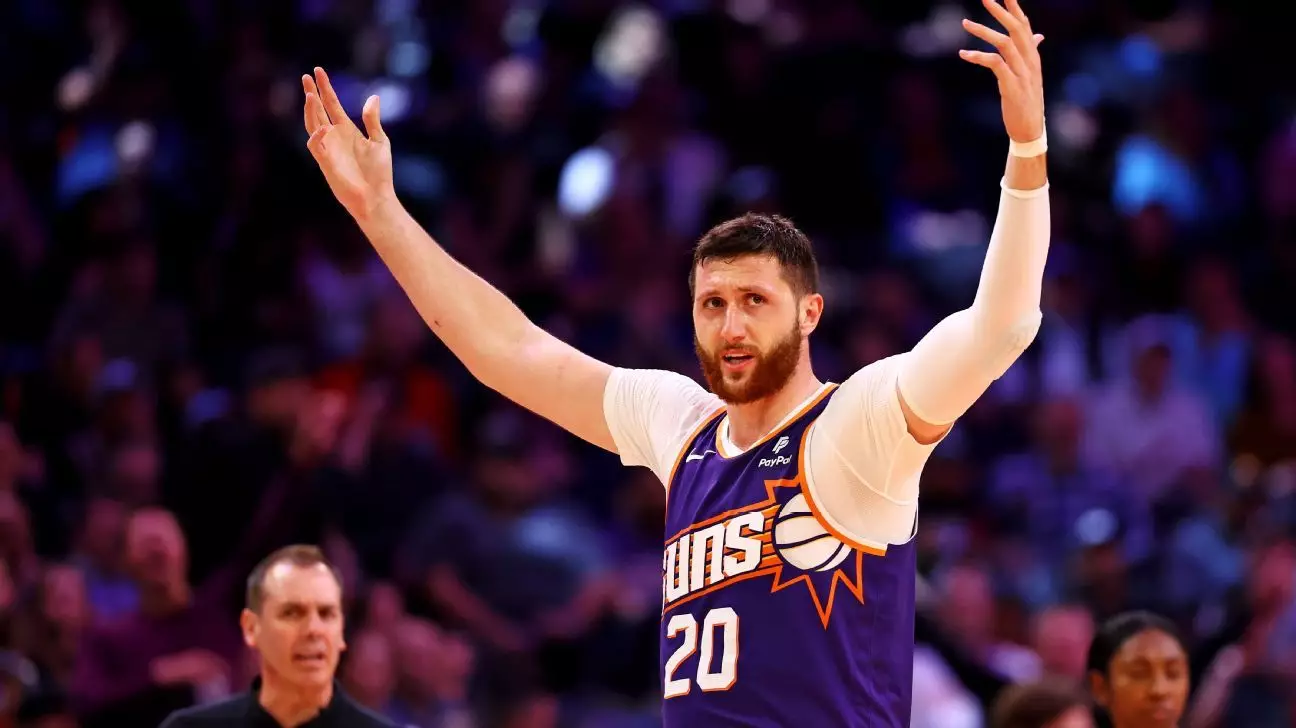In the high-stakes world of the NBA, player-coach relationships significantly impact performance and morale. Jusuf Nurkic, center for the Phoenix Suns, finds himself in a challenging situation as tensions with head coach Mike Budenholzer have become apparent. Recently, Nurkic expressed his discontent over the lack of communication and support he perceives from Budenholzer, which has resulted in his role being dramatically diminished. This situation raises questions not only about the dynamics within the team but also about how emotional and psychological factors play into an athlete’s performance.
The Breakdown of Communication
Nurkic’s comments about not having spoken to Budenholzer in two months highlight a significant breakdown in their communication. Effective dialogue is quintessential in any professional environment, especially in sports where teamwork is paramount. For a player to feel disconnected from the coach signifies deeper issues that may affect overall team chemistry and performance. Nurkic’s assertion that he and Budenholzer “don’t have a relationship” reflects a troubling disconnect that signals not only personal frustrations but also potential issues in team dynamics.
While Nurkic has maintained a professional demeanor, as indicated by his commitment to remain ready and work hard, the psychological toll of being sidelined cannot be understated. Nurkic’s decision to keep his focus on professionalism rather than chaos reflects not only emotional maturity but also a desire to avoid destabilizing the team. Yet, it remains unclear if his motivations can sustain his mental well-being in a high-pressure environment where his contributions are not being utilized.
Once a prominent starter, Nurkic’s relegation to the bench marks a significant shift in his role within the team. After starting 23 games this season, being replaced by Mason Plumlee and subsequently witnessing other players like Nick Richards thrive, must be challenging for the outspoken center. His frustration over the decision to bench him is palpable and raises questions about the criteria following which these decisions are made. The comment “it’s hard to understand why” underscores his confusion and disappointment.
With players like Plumlee and Richards stepping up, the Suns may find short-term success in this rotation. However, the long-term implications of sidelining a player with Nurkic’s experience and skill cannot be ignored. Could this rotational strategy lead to lingering discontent within the locker room? Will Nurkic’s form suffer, or might it create further rifts that result in diminished performance even when called upon?
Nurkic’s frustration comes at a pivotal moment, coinciding with the approaching trade deadline. Despite acknowledging that he has received no communication from the coaching staff about his future role, he remains optimistic about staying with the Suns. His quote, “One door closes, another will open eventually,” hints at a sense of resilience and hope, but is it enough to sustain him emotionally during this turbulent period?
While Nurkic’s perspective is pragmatic, the pressure of impending decisions and uncertainty weighing on players can be immense. The NBA landscape is continuously evolving, often favoring young talent in a “what have you done for me lately” environment. For Nurkic, the challenge now lies in maintaining a competitive edge while simultaneously navigating personal career upheaval.
Nurkic’s situation with the Phoenix Suns offers critical insights into the complex relationships between players and coaches in professional sports. While coaching decisions are rooted in strategy and performance, the human aspect cannot be overlooked. Every player is more than a statistic and reliance on pure analytics can sometimes disregard the emotional nuances involved in their roles.
For the Suns, addressing the currently unresolved communicative gaps with Nurkic may lead to improved team dynamics and overall success. As the trade deadline looms, how they handle this situation could set a precedent for institutional behavior in the future. Ultimately, Nurkic’s story serves as a reminder that behind every athlete’s stats and standings, there lies a deeply personal narrative of struggles, aspirations, and resilience that deserve recognition.


Leave a Reply